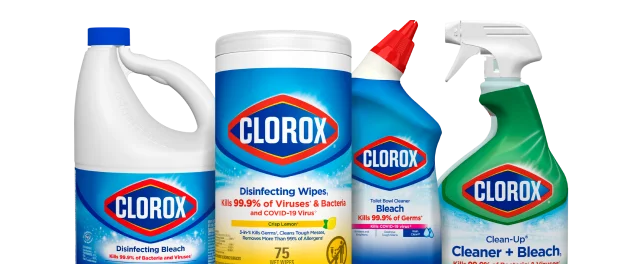How to Clean Kitchen Cabinets to Remove Stickiness & Grease

From food splatters to fingerprints, your kitchen cabinets can get a little grimy from time to time. See our easy tips for how to clean cabinets.
Whether you’ve just had a colorful pizza toss competition in your kitchen or you’re noticing a lot of oily fingerprints on the silverware drawer, your kitchen cabinets can surprisingly take a beating from busy daily life. Fortunately, Clorox has the solution.
What you need

Clorox® Scentiva® Disinfecting Multi-Surface Cleaner

Clorox® Disinfecting Bleach with CLOROMAX® - Concentrated Formula

Sponge

Gallon bucket

Measuring cup
Steps to clean & disinfect hard, nonporous cabinets
Preclean
Wipe cabinet surfaces with a wet sponge. For stubborn grease or food stains, clean with Clorox® Scentiva® Disinfecting Multi-Surface Cleaner and rinse with a wet sponge.

Mix
Use the gallon bucket and measuring cup to mix 1/3 cup of Clorox® Disinfecting Bleach with 1 gallon of water.

Wipe
Use the sponge to thoroughly wipe the surface with the bleach solution.

Wait
Wait 6 minutes for disinfecting. To keep the surface visibly wet for the entire wait time, reapply bleach solution as needed.

Rinse
Rinse with warm water.

Dry
Let air dry.

Keeping your kitchen cabinets clean is simple with the above steps but picking up a few routine habits can help minimize the mess. If you have cabinets near your stovetop, try to cook with a lid or grease splash guard whenever possible. You can also do a quick and easy sweep of high-touch surfaces like handles or pull-tabs with Clorox® Disinfecting Wipes.
It’s important to note that this method is only suitable for hard, non-porous surfaces such as sealed or painted wood.
Frequently Asked Questions
- What does hard, nonporous surface mean?
Hard, nonporous surfaces are impermeable and without pores. Common examples of hard, non-porous cabinet surfaces can include latex enamel painted woodwork, stainless steel, plastic, glass and sealed solid surfaces.
- What if I don’t know what material my cabinets are made of?
If you don’t know what material they are, test the steps above on a non-conspicuous area like inside the door.


